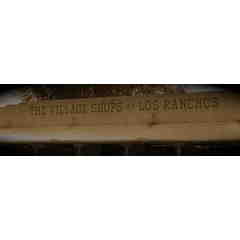Unique Experiences
Rio Grande Scenic Railroad
- Item Number
- 237
- Estimated Value
- 120 USD
- Sold
- 40 USD to jkepler
- Number of Bids
- 1 - Bid History
Item Description
2 tickets to travel on the "Dome" - Rio Grande Scenic Railroad, based in Alamos, Colorado
Alamosa, like most of our country, grew up with railroads. And while the Denver & Rio Grande Railroad put many towns on the map, none went up quite as quickly as ours.
The narrow gauge rail into town was completed on June 22, 1878, and shortly after, a train full of assorted pre-built buildings from nearby Garland City were brought in and put into place that same day. Rumor has it, in fact, that the men who worked the line had breakfast in Garland City that morning, and were later served dinner in the same building that evening – in Alamosa.
Back then, the town’s commercial center was located on what is now Sixth Street, with a couple of buildings to the north on what is now Hunt and State. Alamosa soon became an outfitting point for southern Colorado and northern New Mexico, and by 1880 the population had topped 800, making it the largest and liveliest town in south central Colorado.
With its large railroad station, Alamosa harbored all sorts of rowdy characters – among them construction huskies, sheep herders, cow punchers, miners and gamblers – as well as a large Spanish-speaking community that had settled the area in 1854.
During the same period, in 1880, construction was under way on a rail line leading to Antonito and then, ultimately, to Santa Fe. At the same time, rail construction west through Monte Vista, Del Norte and South Fork was also under way and was finally completed in 1881. Nine years later the track was extended from Salida to Alamosa, and by 1890, and for the following half-century, Alamosa was the hub of narrow gauge railroading in America.
The busy depot hummed day and night with the activity of both passenger and freight trains from Denver, Durango, Santa Fe, Salida and Creede arriving and departing daily. The freight trains supplied the developing valley with ore, lumber, cattle, sheep and farm products, and in turn, agricultural and mining products were shipped out.
Less than a decade later, after years of unsuccessful surveying, a workable route was found and the narrow gauge rail would be replaced by standard gauge from the town of La Veta over La Veta Pass and into Alamosa.
Today, more than 100 years later, the same standard gauge rails are still in use, carrying both freight and passengers over La Veta Pass on the San Luis & Rio Grande Railroad and the Rio Grande Scenic Railroad.
Donated By:
Rio Grande Scenic Railroad
Bosque School stores data...
Your support matters, so Bosque School would like to use your information to keep in touch about things that may matter to you. If you choose to hear from Bosque School, we may contact you in the future about our ongoing efforts.
Your privacy is important to us, so Bosque School will keep your personal data secure and Bosque School will not use it for marketing communications which you have not agreed to receive. At any time, you may withdraw consent by emailing Privacy@frontstream.com or by contacting our Privacy Officer. Please see our Privacy Policy found here PrivacyPolicy.


 Admiral Beverage Corporation
Admiral Beverage Corporation
 LO-BOWE Homes
LO-BOWE Homes
 The Baird Family and The Village Shops at Los Ranchos
The Baird Family and The Village Shops at Los Ranchos
 101.7 The Team Radio
101.7 The Team Radio
 Albuquerque Publishing Company
Albuquerque Publishing Company
 Dr. Alex Rodriguez - NEWMAN Lasik Specialists
Dr. Alex Rodriguez - NEWMAN Lasik Specialists
 First Light Photography
First Light Photography
 New Mexico Angels
New Mexico Angels
 The Sports Clubs
The Sports Clubs
 Tribal Arts - Fine Oriental Rugs
Tribal Arts - Fine Oriental Rugs
 Dion's Pizza
Dion's Pizza